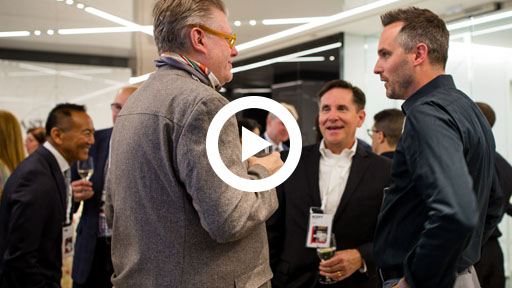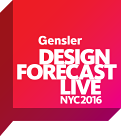How do we get
from now to next?
We believe it starts
with our clients.



How do we get
from now to next?
We believe it starts
with our clients.
In June, we met with 100 of our clients at the first Design Forecast LIVE event, held at Condé Nast’s headquarters in Manhattan and Etsy’s headquarters in Brooklyn. We began the event asking our clients,
“What are the challenges and opportunities you’re seeing? What keeps you up at night and wakes you up in the morning?”
The issues they raised ranged from urban scale to human scale to the places and spaces in between. Future proofing was a big concern—the pace of change today is on every client’s mind, but they’re not afraid to be the disruptors given the right opportunity.
Our 2017 Design Forecast identifies the trends that will shape design’s future, and show how they are already influencing our work—signaling a transformation in built space that is only beginning.

FAIA, Co-CEO

FAIA, Co-CEO
In forums like Design Forecast Live and in one-on-one discussions, our clients are pointing to the challenges they’re facing.
How can we future-proof our projects so they fully repay our investment?
As live, work, and play converge, help us make that a strategic advantage.
Can we stay at design’s leading edge when everything changes so quickly?
Can we design for resilience and still meet our other performance goals?
What will driverless cars mean for our buildings, our tenants, our customers?
Our 2017 Design Forecast is centered on four major themes that encapsulate the ideas we’re focused on with our clients:
THE EXPERIENCE-DRIVEN LIFE |
LIVABLE CITIES |
EVERYDAY IMPACT |
RESPONSIVE DESIGN
Through the lens of these themes we examine how design will shape the human experience in the next year and beyond.
Designing the
EXPERIENCE-DRIVEN LIFE
We interpret experience from our human scale. Making this seamless and coherent—enhanced by other elements, curated, and all-embracing—is design’s challenge.
Delivering tomorrow’s
LIVABLE CITIES
The urban scale defines the city and frames its growth. Connectivity, movement, and the way individual experience is supported make the human scale essential to urban livability.
Designing for
Everyday Impact
Design’s impact touches the places in between. Factors like inclusivity, stewardship, diversity, and flow shape a richer mix of experiences and a seamless transition from one to the next.
Making Design
More Responsive
Innovations like augmented and virtual reality, computational design, and digital fabrication are spurring radical changes in how we design and deliver our work.

 DESIGN FORECAST 2017
DESIGN FORECAST 2017




